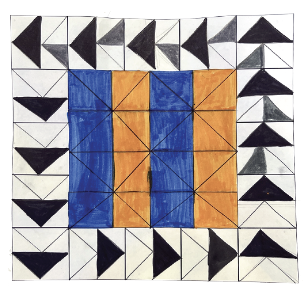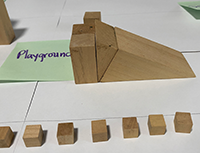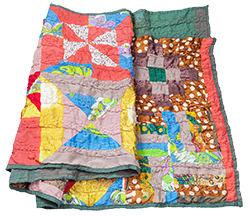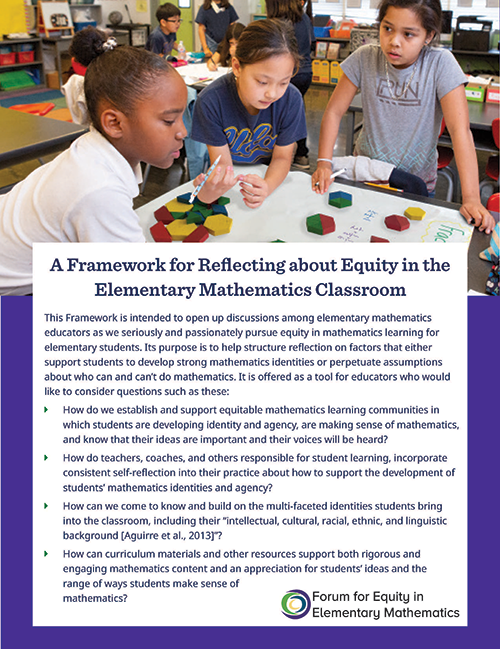
The Student Reflection Tool is designed to support teachers in making student reflection a regular part of their practice.
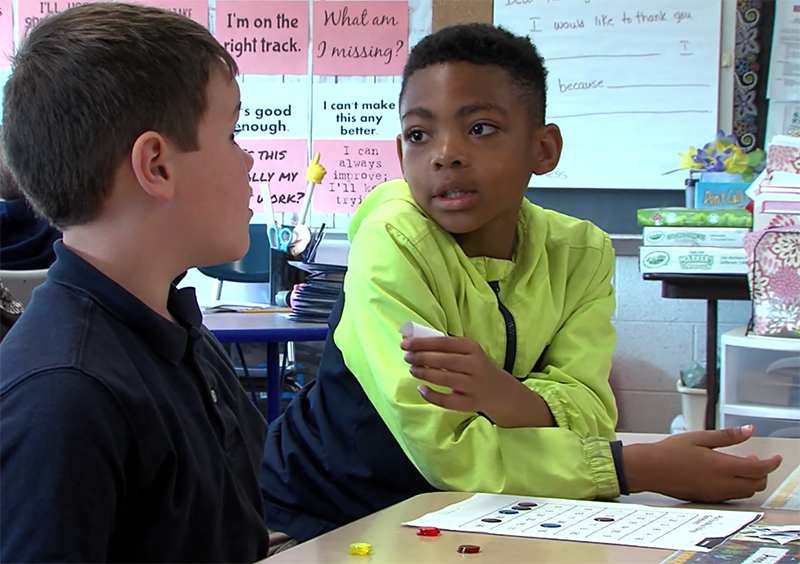
Teacher Reflection Tools are designed to help teachers keep equitable participation at the forefront as they plan for and facilitate whole group discussions and small group/pair work.
Blogs
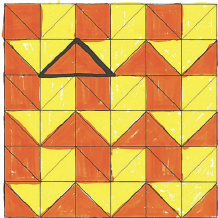
Students investigate features of shape as they learn about quilts and quilters and as they make their own paper quilts.

Excursions are deep and rigorous math activities that support all students in making meaningful connections between the mathematics they are learning, their interests, their communities, and the world. They support the development of a vibrant mathematics classroom in which all students feel that their identities are welcomed and engage actively and joyfully in learning.

Math Workshop can foster the development of an equitable learning community. When it is structured to foster independence and encourage students in taking responsibility for their own learning and the learning of others, it can also the development of mathematical identity and agency.

Since its launch in Fall 2023, the Forum for Equity in Elementary Mathematics has pursued our goal of providing resources, publications, and professional learning opportunities to broaden and deepen perspectives and to open up discussions among educators about equitable math learning communities. Check out our resources.
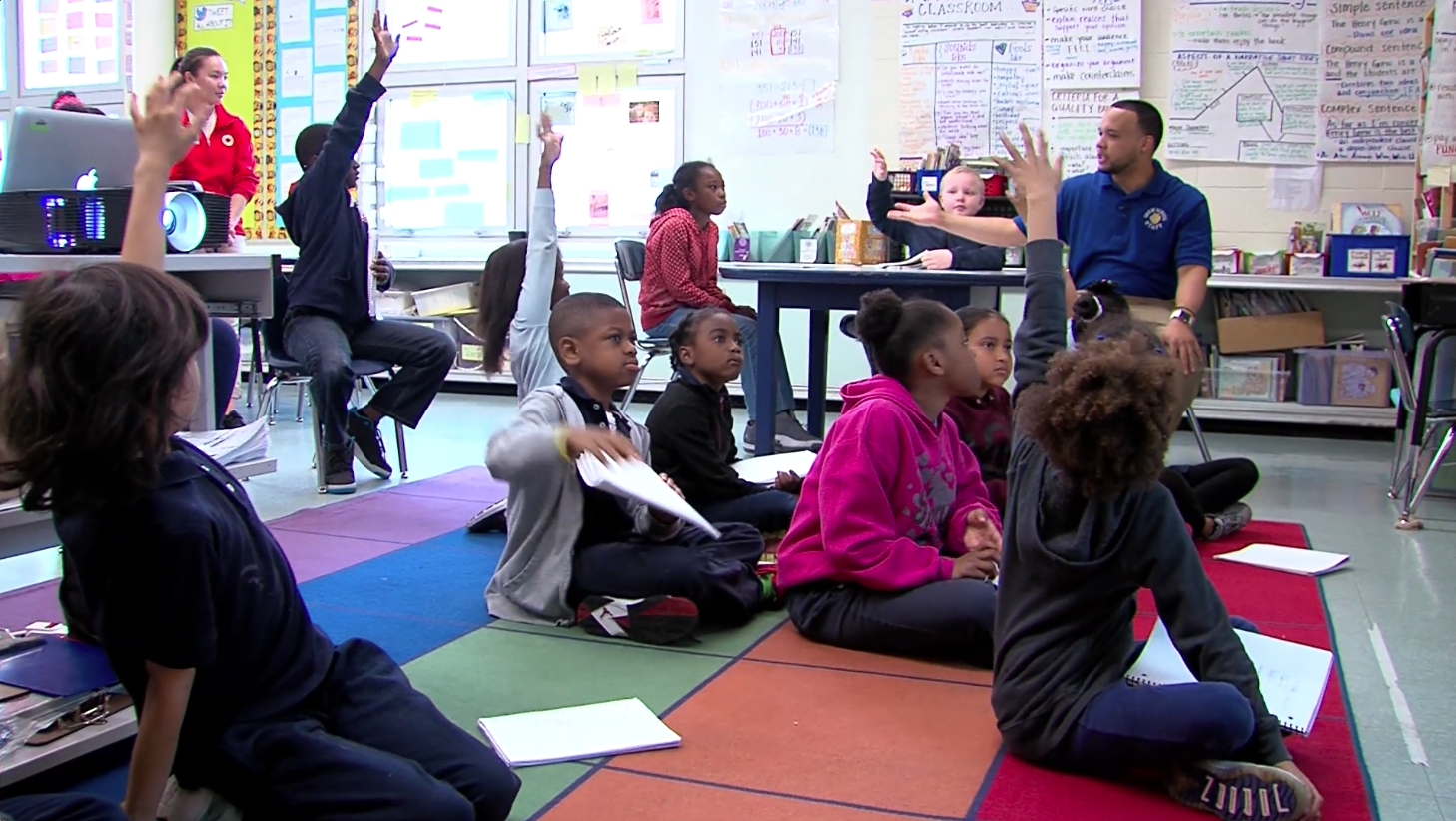
Whole-class discussions are an essential feature of the elementary math classroom [and so] it is important to think about and plan for how to make participation in such discussions equitable and how to establish an environment where students share their thinking and listen thoughtfully to the ideas of others.

“Understanding what it means to ‘be a good partner,’ and how to make space for each person’s ideas, are important aspects of an equitable learning community.” … But how to ensure that all students are positioned and seen as thinkers and doers of math during partner work?

Partner work is a structure that offers critical opportunities to promote equity in the mathematics classroom and support the identity and agency of all students, especially those who have been historically marginalized in mathematics.
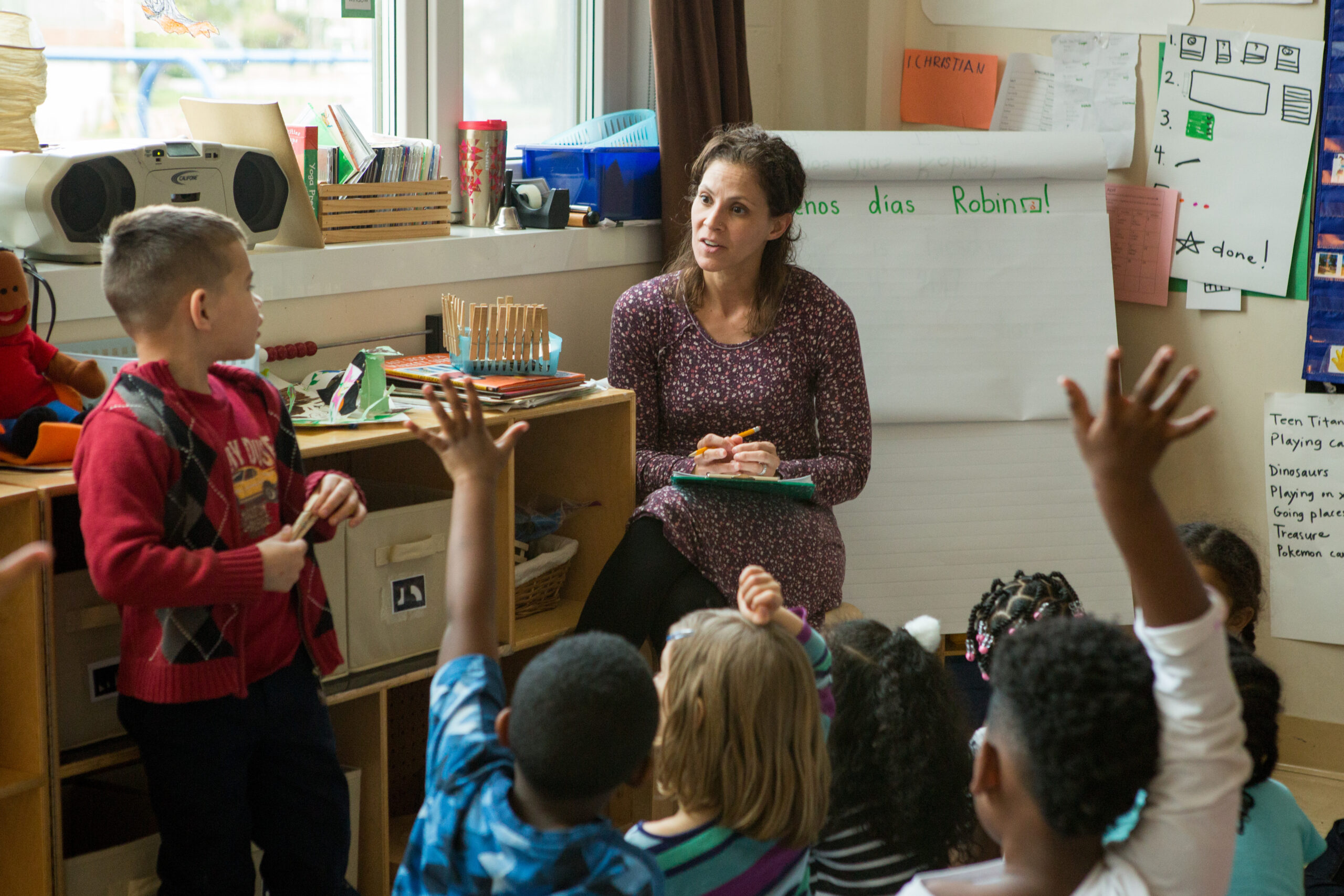
What a teacher does during a discussion can powerfully impact whether and how a student participates. One teacher used the Teacher Reflection Tool for Whole Class Discussions to reflect on which students she was calling on to answer which types of questions. She used what she learned to make some changes to her practice and try to bring about more equitable participation in the discussions in her classroom.

It is important to pay attention to and reflect on students’ participation in whole class discussions in order to bring about more equitable participation.
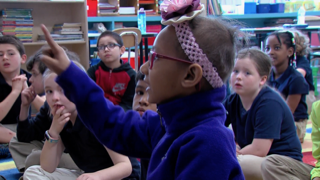
Self-reflection can be a powerful tool for teachers and school leaders. It can be implemented immediately and regularly to help us focus on instructional practices, uncover beliefs and values that may impact how our students see themselves in the math classroom, and move us to take action to create more inclusive learning communities.

Students investigate features of shape as they learn about quilts and quilters and as they make their own paper quilts.

Excursions are deep and rigorous math activities that support all students in making meaningful connections between the mathematics they are learning, their interests, their communities, and the world. They support the development of a vibrant mathematics classroom in which all students feel that their identities are welcomed and engage actively and joyfully in learning.

Math Workshop can foster the development of an equitable learning community. When it is structured to foster independence and encourage students in taking responsibility for their own learning and the learning of others, it can also the development of mathematical identity and agency.

Since its launch in Fall 2023, the Forum for Equity in Elementary Mathematics has pursued our goal of providing resources, publications, and professional learning opportunities to broaden and deepen perspectives and to open up discussions among educators about equitable math learning communities. Check out our resources.

Whole-class discussions are an essential feature of the elementary math classroom [and so] it is important to think about and plan for how to make participation in such discussions equitable and how to establish an environment where students share their thinking and listen thoughtfully to the ideas of others.

“Understanding what it means to ‘be a good partner,’ and how to make space for each person’s ideas, are important aspects of an equitable learning community.” ... But how to ensure that all students are positioned and seen as thinkers and doers of math during partner work?

Partner work is a structure that offers critical opportunities to promote equity in the mathematics classroom and support the identity and agency of all students, especially those who have been historically marginalized in mathematics.

What a teacher does during a discussion can powerfully impact whether and how a student participates. One teacher used the Teacher Reflection Tool for Whole Class Discussions to reflect on which students she was calling on to answer which types of questions. She used what she learned to make some changes to her practice and try to bring about more equitable participation in the discussions in her classroom.

It is important to pay attention to and reflect on students’ participation in whole class discussions in order to bring about more equitable participation.

Self-reflection can be a powerful tool for teachers and school leaders. It can be implemented immediately and regularly to help us focus on instructional practices, uncover beliefs and values that may impact how our students see themselves in the math classroom, and move us to take action to create more inclusive learning communities.

Teaching is an academic and human endeavor that involves continuous cycles of interactions of the instructional core: students, content, and teachers.

In the course of field testing the tool, teachers found that setting aside time for their students to reflect contributed to a culture that was built on trust, honest feedback, and open communication
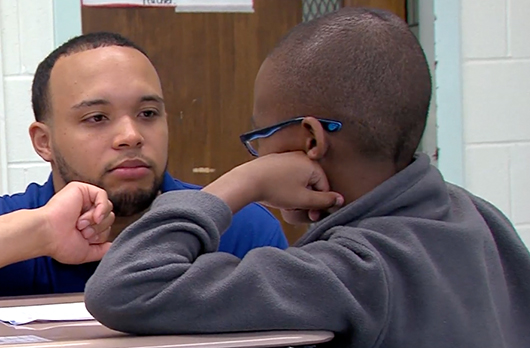
Developing an equitable math learning community that centers each student’s identity, needs, and voice requires that teachers take the time to learn about their students ...
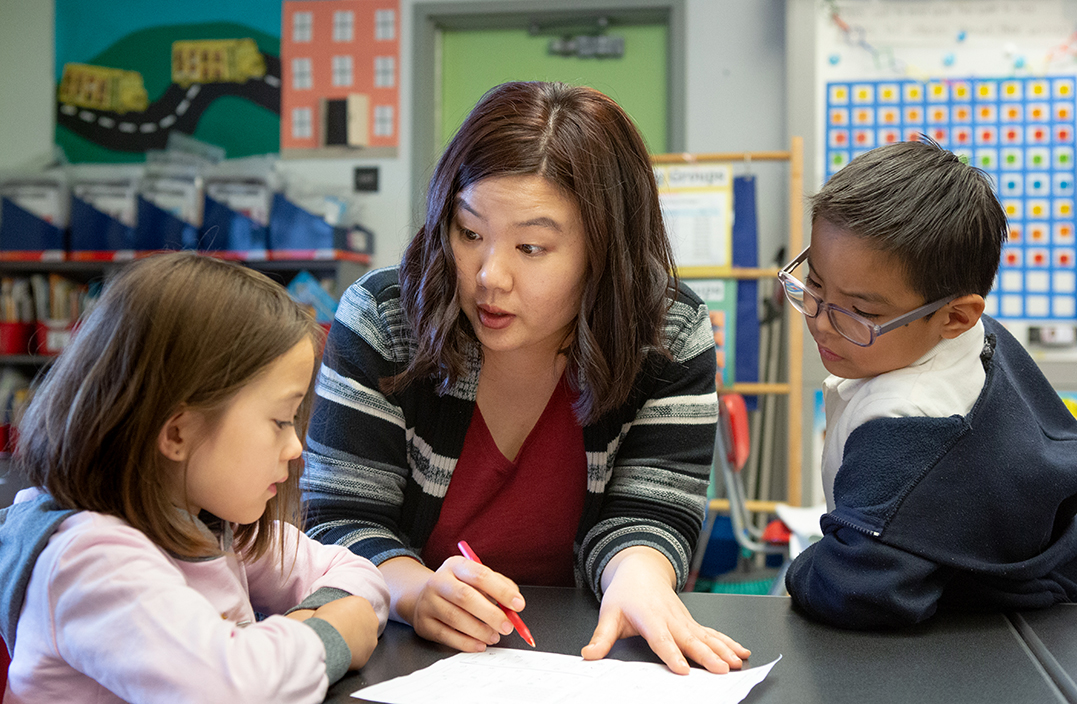
In order to develop a classroom community that encourages and incorporates students’ ideas and agency, we need to be aware of opportunities that allow us to learn more about our students.

Establishing an atmosphere of trust is essential if we want students to feel safe sharing openly about themselves and their experiences with us and with each other.

Equitable learning communities focus on the development of students’ mathematical ideas and require a commitment to provide all students access to rigorous, cognitively demanding mathematics.

Welcome to The Forum for Equity in Elementary Mathematics, a place for educators to reflect on and discuss equity, access, identity, and agency in the elementary mathematics classroom. One of its goals is to provide ...


